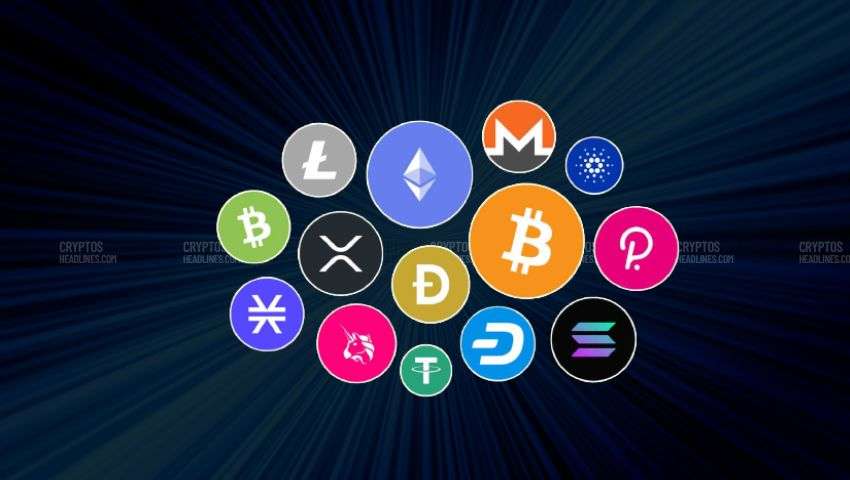Cryptocurrencies have gained widespread attention and popularity over the past decade, with Bitcoin being the pioneer in the field. However, in recent years, several alternative cryptocurrencies, commonly known as altcoins, have emerged and gained traction among investors and enthusiasts.
As the cryptocurrency market continues to evolve, the debate between altcoins and Bitcoin’s potential for growth and investment opportunities has become a hot topic. In this blog post, we will delve into the comparison of altcoins and Bitcoin, exploring their key differences and evaluating which one holds more potential.
Introduction to Altcoins and Bitcoin
Altcoins refer to any cryptocurrency other than Bitcoin. While Bitcoin was the first decentralized digital currency, altcoins are alternative coins that have been created after the success of Bitcoin. Some of the well-known altcoins include Ethereum (ETH), Ripple (XRP), Litecoin (LTC), and many others. Each altcoin has its unique features, use cases, and market dynamics.
Bitcoin, on the other hand, was created in 2009 by an unknown person or group using the pseudonym Satoshi Nakamoto. It operates on a decentralized network called blockchain and aims to be a digital alternative to traditional currencies, providing a decentralized and transparent way of transferring value across the internet.
Differences in Technology and Functionality
One of the significant differences between altcoins and Bitcoin lies in their underlying technology and functionality. While Bitcoin primarily serves as a digital currency, many altcoins offer additional functionalities beyond just being a medium of exchange.
For instance, Ethereum is not only a cryptocurrency but also a decentralized platform that enables the creation of smart contracts and decentralized applications (dApps).
This opens up a wide range of possibilities for developers to build various decentralized solutions on top of the Ethereum blockchain, including DeFi protocols, NFT marketplaces, and more. This additional functionality has made Ethereum one of the most popular and widely used altcoins in the market.
Similarly, Ripple (XRP) focuses on providing a blockchain-based payment protocol for facilitating cross-border transactions, particularly for financial institutions. Litecoin (LTC) aims to be a “lite” version of Bitcoin, with faster block generation times and lower transaction fees. These examples highlight how altcoins can offer unique functionalities and use cases beyond Bitcoin’s scope.
Market Capitalization and Price Volatility
Another significant factor to consider when comparing altcoins and Bitcoin is their market capitalization and price volatility. Market capitalization refers to the total value of a cryptocurrency in circulation and is often used as a measure of its overall size and significance in the market.
Bitcoin, being the first and most well-known cryptocurrency, has the largest market capitalization among all cryptocurrencies, often accounting for the majority share of the total cryptocurrency market cap. As of the time of writing, Bitcoin’s market cap is in the billions of dollars, far surpassing most altcoins.
However, altcoins have gained substantial market capitalization as well, with some of them ranking high in terms of market share. For example, Ethereum has been consistently ranked as the second-largest cryptocurrency by market cap, and several other altcoins like Binance Coin (BNB), Cardano (ADA), Solana (SOL), and others have also gained significant market share.
Despite their growing market capitalization, altcoins are generally considered more volatile compared to Bitcoin. The prices of altcoins can experience wild fluctuations in short periods, which can present both opportunities and risks for investors. On the other hand, Bitcoin has generally been considered relatively more stable in terms of price volatility, although it is not entirely immune to market fluctuations.
Use Cases and Adoption
The adoption and use cases of altcoins and Bitcoin also differ significantly. While Bitcoin primarily serves as a digital currency, altcoins are designed to offer various functionalities and use cases beyond simple peer-to-peer transactions.
As mentioned earlier, Ethereum’s smart contract capabilities have enabled the development of a vast ecosystem of decentralized applications (dApps) and decentralized finance (DeFi) protocols.
These applications offer decentralized lending, borrowing, trading, and other financial services, creating a vibrant and growing ecosystem that has gained widespread adoption.
Other altcoins like Ripple (XRP) focus on providing blockchain-based payment solutions for financial institutions, while Litecoin (LTC) aims to be a faster and cheaper alternative to Bitcoin for everyday transactions. These examples illustrate how altcoins are being adopted and utilized for specific purposes beyond just being a digital currency.
On the other hand, Bitcoin’s adoption as a digital currency has been more limited, with its primary use case being a store of value or a potential hedge against inflation.
Nevertheless, Bitcoin has gained increased acceptance in mainstream businesses, with some companies accepting it as a form of payment. It has also gained recognition as a potential investment asset and is being considered by institutional investors as part of their investment portfolios.
Overall, while altcoins offer unique use cases and functionalities beyond Bitcoin, their adoption and real-world applications are still evolving, and their potential impact on various industries is yet to be fully realized.
Community and Development
The communities and development behind altcoins and Bitcoin also play a crucial role in their potential for growth and adoption. The communities around these cryptocurrencies are comprised of developers, investors, enthusiasts, and users who contribute to their development, promotion, and adoption.
Bitcoin has a well-established and widespread community of developers and supporters who have been working on its development and promotion for over a decade. It has a robust ecosystem of developers, miners, and users who contribute to its open-source development, security, and adoption.
Similarly, altcoins also have their communities of developers, investors, and enthusiasts who contribute to their development and promotion. These communities often have their forums, social media groups, and other platforms for discussions, collaborations, and updates on the progress of the respective cryptocurrencies.
The development and innovation in the altcoin space are dynamic, with new projects and ideas constantly emerging. Some altcoins have strong development teams and communities, driving continuous improvements, updates, and new use cases.
However, it’s also worth noting that not all altcoins have active development communities, and some may face challenges in maintaining active development and adoption.
- Read More: Exploring Blockchain Security: Can Blockchain Be Hacked?
- Read More: Exploring Blockchain Use Cases by Industry – Power of Blockchain
Final Words
In conclusion, altcoins and Bitcoin offer different potentials for growth and investment opportunities. Altcoins, with their unique functionalities, use cases, and potential for high growth, can provide lucrative opportunities for investors seeking higher risks and rewards.
However, they also come with higher risks and challenges. On the other hand, Bitcoin is often considered a more stable and established investment option with wider adoption and acceptance. The adoption and real-world applications of altcoins and Bitcoin are still evolving, and their potential impact on various industries is yet to be fully realized.
It’s essential for investors to carefully evaluate the risks, potential rewards, and long-term prospects of altcoins and Bitcoin before making investment decisions. Consulting with a financial professional and conducting thorough research can help investors make informed decisions based on their individual risk tolerance and investment goals.















